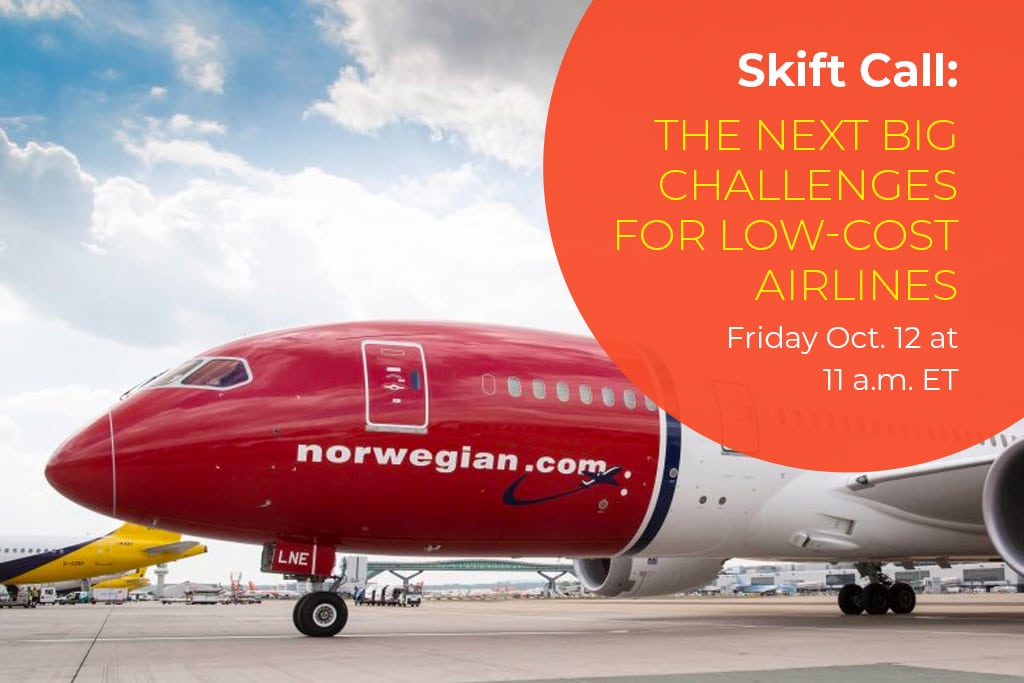Skift Call Oct. 12: The Next Big Challenges for Low-Cost Airlines

Skift Take
Low-cost and ultra-low-cost airlines have had great success, but the model is not a panacea. Many discounters never disrupt as promised, or realize the profit. We’ll explore all the potential hurdles facing low-cost carriers on Friday, October 12 at 11 a.m. EST on a Skift Call. Please join us for this all-important discussion.
Conventional wisdom will have you believe that low-cost and ultra-low-cost carriers are disrupting the airline industry worldwide with their cheap fares, striking fear in established carriers, while changing what passengers expect.
Undoubtedly, much of that is true. From the Americas to Europe to Asia, discount airlines not only have delighted customers with pricing,
